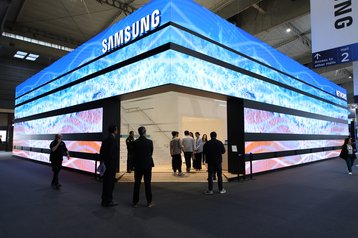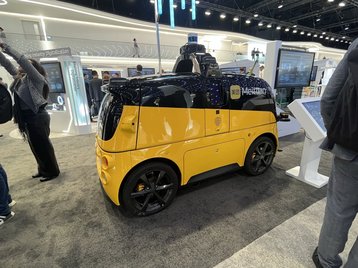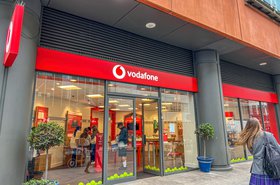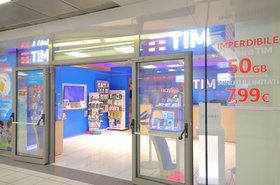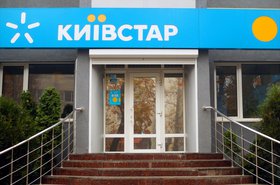Last year Mobile World Congress was dominated by themes such as sustainability, and the battle between mobile operators and Big Tech over fair share payments for the usage of mobile networks.
This year, however, felt a bit different.
It was the biggest show since the pandemic, with 101,000 people attending the mobile industry’s showpiece event in Barcelona, Spain. The King of Spain, Felipe VI was one of those in attendance, along with Pedro Sánchez, the country’s Prime Minister.
AI was discussed at length, but this should come as no surprise given the hype around the technology in the past 18 months or so and the soaring demand for AI products and services.
This year’s show stretched far beyond telecoms, with flying cars, helicopters, and other use cases on display. But all have one thing in common, they’ll need reliable networks to underpin them.
AI impossible to ignore
AI was undoubtedly a hot topic on the show floor. Whether people were bigging up the technology, or in some cases skeptical about its potential, it was nigh impossible to avoid.
During one keynote, Vodafone CTO Scott Petty claimed AI is “overhyped at the moment.”
Some may argue that he has a point given some of the more outlandish predictions about its potential, but it is clear telcos are taking AI seriously. Members of the Global Telco AI Alliance (GTAA) are planning to establish a joint venture later this year specifically aimed at developing large language models.
In a joint statement, Deutsche Telekom, e& Group, Singtel, SoftBank Corp., and SK Telecom revealed the plans after holding the inaugural meeting at the trade show.
Collectively the quintet claims that AI will enable chatbots to become even more humancentric, and say the JV will bring Europe and Asia closer together.
What do we want from AI?
It’s tricky to know exactly what AI will bring. For all the promise, there’s also a lot of skepticism, as well as fears from some quarters that it may render a lot of jobs redundant.
BT has said as much, noting that a fifth of the 55,000 jobs it plans to cut by the end of the decade will be replaced by AI. This won’t be something that is just confined to the telecoms sector either.
Jürgen Hatheier, chief technology officer for APAC and EMEA at networking solutions vendor Ciena, told DCD that there are still a lot of questions to be asked of AI.
“At Ciena, we’re currently focusing on the opportunities around AI, and how we can use AI to provide better services, and to beef up our products with those capabilities,” he says.
“If you stay around in observation mode for too long, watching AI. It's going to be very hard to catch up. It's not only a technology challenge, I think it's going to be a big commercial modeling challenge, to work out how you can intercept the big money that's expected from AI.
More Open RAN
Away from AI, a topic that was pretty hot once again was Open RAN. More telcos announced partnerships around this, including Kyivstar and Rakuten Symphony, and NTT and AWS.
Telcos are expected to invest more than $30 billion in Open RAN by the end of the decade.
Analyst firm Counterpoint Research expects investments will start to increase year-on-year (YoY) after 2025.
The technology promotes a new breed of telecoms kit that allows providers to mix and match solutions from multiple vendors, rather than being tied to proprietary equipment supplied by a single vendor. It is hoped this will promote competition in the market and offer better value to customers.
Towards the end of last year, AT&T and Ericsson sealed a lucrative $14 billion OpenRAN deal. A big advocate for the technology, AT&T expects 70 percent of its mobile network traffic to flow across Open RAN by 2026.
At this year’s show, the duo completed a cloud RAN call, using Ericsson's cloud technology over AT&T's commercial 5G network.
“This [Cloud RAN call] was a huge accomplishment for us, and was a good step in the direction of going down the path of this open multi-vendor, programmable RAN network that we that we envisioned,” Adam Loddeke, AVP of RAN technology at AT&T, told DCD.
The call was carried out in the South Dallas area. Further calls will take place, but Loddeke warns it will take some time - and lessons will be learned.
“We'll grow the existing trial area in South Dallas into other areas later this year,” he says. “The exact volume is still being determined. I would say we're approaching it like a crawl, walk, run scenario.
“We’re currently at the crawl stage, where we’re learning lessons about how to operationalize.”
He noted that Ericsson will be working through its own learnings from the software.
“We also have to do some development within AT&T to support the inclusion of Cloud RAN within our network, so there's IT system development that has to occur, along with processing skills training, because it's new for AT&T, and so you have to scale the workforce as well,” Loddeke adds.
Samsung wants to go big
One of the promises of Open RAN is that it will bring on board more hardware and software players, so there were probably a few laughs when some of the big announcements featured the same old names, such as Ericsson or Nokia.
But one new vendor that wants to make some waves in the Open RAN arena is Samsung Networks.
The Korean electronics giant has struck Open RAN partnerships with Dish Wireless in the US, KDDI in Japan, and more recently Canadian telco Telus Networks. Magnus Ojert, senior vice president, networks business, Samsung Electronics America, told DCD that it sees a real opportunity to stamp its mark in the Open RAN race.
“With Samsung, when we get into a business, we don't want to be either the fourth or third best player,” Ojert says.
“We ultimately want to be the number one, we want to be the best, or the top vendor in the world.”
The Open RAN approach makes this possible, Ojert says. He believes it has opened the market up for a number of different players, including chip companies and software companies which wouldn’t have usually been involved in the network buildout.
5G Advanced in Malaysia
With 5G now commonplace in multiple markets around the world, attention has turned to 5G Advanced (5G-A), or 5.5G as some have labeled it.
5G-A is tipped to drive AI-based capabilities to 5G RAN, core, and operation domains.
Chinese vendor Huawei was talking particularly loud about the technology, a few days after it revealed it had worked with Malaysian telco Maxis to complete the first 5G-Advanced technology trial in the country and Southeast Asia.
Huawei boasted that it was able to demonstrate peak speeds of up to 8Gbps.
For context, Opensignal revealed in a study last year that South Korea has the fastest average 5G download speeds at 432.5Mbps.
It wasn’t just Huawei talking about 5G-A, Ericsson also waded into the discussion. Once again the 5G Advanced conversation centered around Malaysia, with Ericsson signing an MoU with Malaysia's Digital Nasional Berhad (DNB) to deploy 5G-A in the country.
Ericsson is the network provider for the DNB, which is Malaysia’s first shared 5G network.
"This new '5G Advanced' technology will bring advanced radio security, superior user experience, and enterprise capabilities, as well as empowering sustainability through enhanced energy management," claimed Nasution Mohamed, chief operating officer at DNB.
Spectrum splits opinion
It’s not a telecoms conference without a discussion about spectrum, and this year’s show was no different.
Thierry Breton, the European Commissioner for Internal Markets, was even drawn into the conversation on spectrum allocation, which is always a divisive issue.
“European businesses and citizens are always at the center of our ambition, but we must balance the focus with the need for a competitive and modern economy,” Breton said.
“We should have the same spectrum policy throughout Europe and push for more timely and affordable options."
Breton says the mobile industry needs to do better with the allocation of 6G spectrum.
"In regard to 6G, we cannot afford to encounter delays in the spectrum licensing process with huge disparities in timelines between member states," Breton said.
"We cannot tolerate the same outcome as for 5G where the process is still not complete after eight years. “Investment is needed now to bridge the gap. No less than €200 billion ($216bn) [is] needed over the next five to six years, and this is only for completing the rollout of 5G," he added.
A separate debate on how much spectrum is required for 6G was also held during MWC. This saw Doug Kirkpatrick, president and CEO at radio-unit maker Eridan, argue that the existing spectrum should be repurposed.
“From a technology perspective, we don’t need any more spectrum," Kirkpatrick told delegates. "The challenge is not the spectrum, the challenge is pushing the technologists to push the pieces that you need, we probably have the spectrum in the wrong places.
"We need to think more about what kind of spectrum we want to use for what kind of applications. Moving applications from one spectrum to another is not a zero-sum game; you’re going to have a transition period in between. So we will likely need some intermediate spectrum in order to make those movements happen, but when we’re done, the answer should be zero.”
What next?
The industry is very much in its 5G era now, be that through the 5G standalone deployments, various spectrum launches, and Open RAN architecture underpinning these networks.
Next up is 6G, and although it’s not expected to launch commercially before the end of the decade, that doesn’t mean it’s not being discussed.
“6G is still very raw,” says Youssef Latoyef, VP head of strategy and portfolio and cloud services at Ericsson. “The bulk of 6G will be on the radio side.
“From a core perspective, we look at 6G as a bit of an evolution of 5G, especially on the standalone core. So for us, it's about how we continue driving and leveraging the capabilities we introduced in standalone to apply to the 6G networks.”
For many, AI will make more of an impact on the telecoms industry when 6G becomes a reality. For now, it’s a waiting game, but there’s a good chance there will be more 6G talk at next year’s show.



